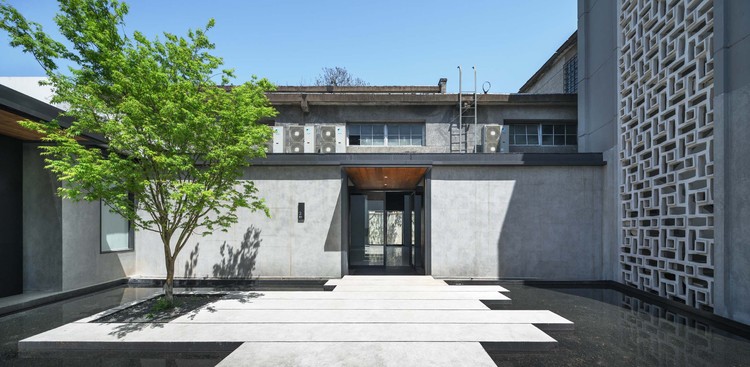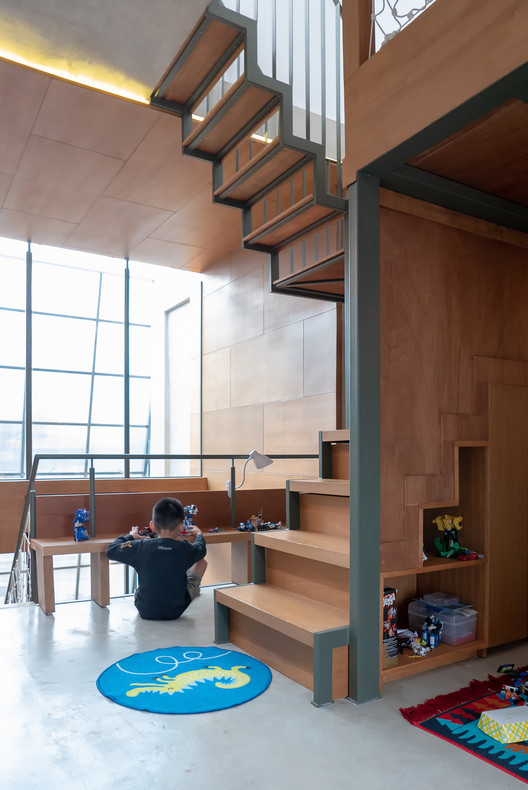City Center Pavilion and Main Square Comac
2013-09-20 00:00
架构师提供的文本描述。吉纳克是一座古罗马城市,从1世纪开始,它是普罗旺斯地区的一座城市,距马赛20公里。
Text description provided by the architects. An old Roman City from the 1st century, Gignac la Nerthe is a city from the Provence region, 20km from Marseille.
20世纪60年代末,这座城市伴随着第一波北非移民浪潮而发展,上世纪80年代,人们从马赛最粗糙的社区搬来。
In the late 1960s, the city developed alongside the first wave of North African immigration and in the 1980s with the people moving from some of Marseille’s roughest neighborhoods.
如今,这个城市已经由低成本的个人住房填充,这些住房没有为公共空间留下任何空间。
Nowadays, the city has been populated by low cost individual housing that didn’t leave any room for public space.
城市中心的新广场和展馆提供了一个两级建议:首先是城市的演变,然后是社会的答案。
The city center’s new square and pavilion delivers a two-level proposal: first an urban evolution and then a social answer.
其主要目标是将三块荒废的土地统一成一个与实际城市中心相连的公共广场,包括市政厅主广场、教堂、一座旧谷仓、一座村庄房屋、一间旧洗衣间和林荫大道佩里尔。
The main goal is to unify three deserted plots into a whole public square connected with the actual city center, composed of the town hall main square, the church, an old barn, a village house, an old wash house and the boulevard Perrier.
首先,房屋必须被拆除,才能与市政厅广场和废弃的地块建立直接联系。
First of all, the houses had to be demolished to create a direct connection with the town hall square and the deserted plots.
The old barn was renovated to leave a historical trace in the middle of the city.
通过扩展市政大楼所创造的轴线,一方面建立了建筑元素来构造公共空间,另一方面组织了这种空间所需的一些功能。
By extending the axis created by the municipality‘s building, an architectural element is set up on one hand to structure the public space and on the other hand to organize some function needed in such a space.
在实际市政厅广场的延续中,该项目的入口处由新展馆和改造过的旧谷仓组成。
In the continuation of the actual town hall’s square, the entrance of the project is defined by the new pavilion and the renovated old barn.
这座70米长的建筑正在建造一个矿物广场,接着是一个植物园,古老的普罗旺斯植物和鲜花正在广场上生长。
The long building (70 meters) is creating a mineral square followed by a botanical garden, old Provencal plants and flowers are growing along the square.
在亭子的另一边,普罗旺斯花园由9棵树和一条水渠组成。
On the other side of the pavilion, a Provencal garden is defined by 9 trees and a water canal.
展馆正在举办活动和活动,首先是儿童区:一个小剧院和一个操场、喷泉、厕所、有盖的聚会空间、露天午餐,最后还有一个供放映、儿童表演或电影放映的露天剧场。
The pavilion is hosting activities and functions, beginning by the children area: a small theater and a playground, the fountain, toilets, a covered space for party, open air lunches and at the end an open air theatre for projection, children shows or movies shows.
现代普罗旺斯式的方法:陶瓷彩色图案来自遗址上的一块陶瓷造物,作为该地区遗产的见证。
A modern Provencal approach: the ceramic colored pattern comes from a piece of ceramic founds on the site, as a testimony to the region’s heritage.
整个城市项目正在创造几个亲密的空间,并促进社会聚会和活动。它是帮助市政府实现对Gignac la Nerthe公民的社会政策目标的有力工具。
The entire urban project is creating several intimate spaces and foster social gatherings and activities. It is a powerful tool to help the municipality realize its social policy goals towards the citizens of Gignac la Nerthe.
 举报
举报
别默默的看了,快登录帮我评论一下吧!:)
注册
登录
更多评论
相关文章
-

描边风设计中,最容易犯的8种问题分析
2018年走过了四分之一,LOGO设计趋势也清晰了LOGO设计
-

描边风设计中,最容易犯的8种问题分析
2018年走过了四分之一,LOGO设计趋势也清晰了LOGO设计
-

描边风设计中,最容易犯的8种问题分析
2018年走过了四分之一,LOGO设计趋势也清晰了LOGO设计


















































































